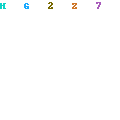Background
The thesis research is part of an ongoing framework of 3D machine vision research in automated online particle size measurement at Luleå University of Technology. The application area covers a broad range of applications in industry with a current focus in the mining and aggregates industries. The research goal is to develop prototype measurement products that can facilitate a transformation in process feedback and automatic control optimizations in blasting, crushing, agglomeration, and other processes that modify particle size. These optimizations will in turn facilitate a transformation in energy efficiency and product size quality in these industries.
The current research is based on 3D range data of bulk material (piled particulate material) either on conveyor belt or in the bucket of an excavator. The 3D range data is currently obtained from laser triangulation or laser scanners but is not restricted to these technologies. Evaluation of new technologies for fast 3D range sensing in outdoor and larger scale is expected.
The research framework has established automated segmentation and classification strategies for identifying, classifying, and sizing individual particles in a pile and the thesis research will predominately focus on algorithms and analysis around two key objectives;
Development of robust automated segmentation strategies that are easily adapted across a wide range of material types (pellets, rocks, limestone, iron ore, coal etc.)
Investigation of the processes that bias the visible of a particle pile and the relationship to the pile size distribution.
The research will likely require; advances in morphological image segmentation, algorithmic development in interpreting the geometry and topology of the 3D range data, mathematical modeling of piled particulate material, and possibly fusion of different measurement sources.
Research setup
The research is coordinated by Luleå University of Technology in conjunction with the ProcessIT Innovations industrial collaboration centre and will involve a number of industrial projects to demonstrate the research and solve industry problems. The candidate will join an emerging group in Industrial Image Analysis within the department of Computer Science and Electrical Engineering. Close collaboration with industrial and commercial partners will occur in order to ensure successful demonstration projects. The industry and commercial partners will contribute knowledge in the application area, machine vision techniques, and integration of the prototype solutions so that the candidate can focus predominantly on analysis and solving open research questions.
Candidate(s) profile
The candidate(s) should either have a background in mathematics, computer science and/or electrical engineering with good knowledge in several of the following areas; image processing, algorithms, computational geometry and numerical analysis. In addition, programming skills in Matlab and C/C++ are required during the course of the thesis work.
Information
For further information, please contact: Matthew Thurley, +46-920- 492360, matthew.thurley@ltu.se, or Johan Carlsson, +46-920-92517, Johan.Carlson@ltu.se. You can also visit our homepage http://www.ltu.se/csee
Application
The application must include personal letter, CV, university transcripts (tests/grades record), and contact details of at least two references. Send
in your application marked with the reference no 2780-09 to Luleå University of Technology, The Registry secretary, SE-971 87 LULEÅ, or by e-mail to
registrator@ltu.se.



0 comments:
Post a Comment